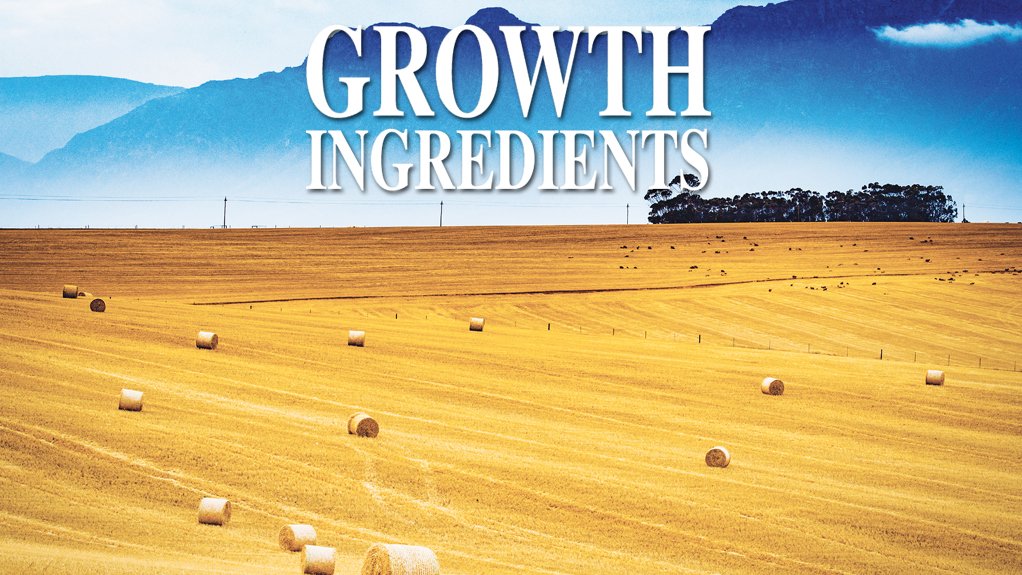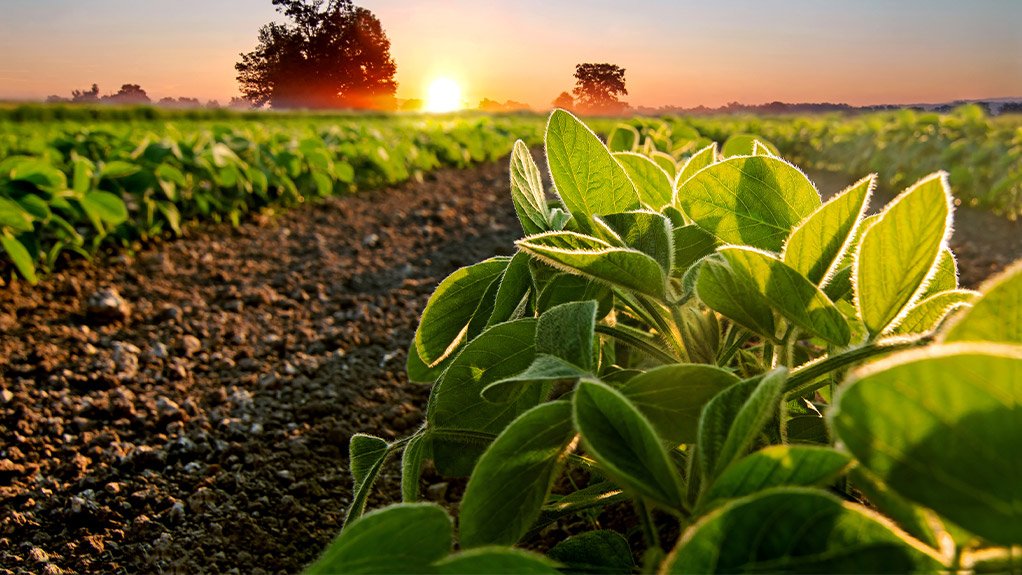Variable climatic conditions, macro- economic fluctuations, trade wars and land reform policy uncertainty will remain some of the biggest factors impacting on the South African agriculture sector for the foreseeable future, according to the Bureau for Food and Agricultural Policy’s (BFAP’s) agricultural outlook for 2018 to 2027.
Investors may hold back on investment should land expropriation without compensation be actioned and, without continued investment, the value of agricultural exports could decline by 40%, with potentially 30% of jobs in high-value export-orientated crop farming being lost in the short term, states the BFAP.
“A holistic land reform programme has to be designed and implemented, taking all levels of land ownership, tenure security and farming systems and typologies, demographics and transformation in the food system into consideration. It needs to be specific, spatially targeted and take cognisance of the economic realities of farming to be sustain- able,” the organisation notes.
Moreover, Absa senior agricultural econo- mist Wessel Lemmer emphasises the lack of logistics infrastructure and biosecurity as central agriculture sector concerns. For instance, to derive export benefit from South Africa’s lemon production, which is picking up on the back of newly introduced cultivars, the country has to consider how the fruit will be moved from the northern parts of the country to the Durban harbour, the closest South African port from Limpopo. Road and rail would need to become cheaper to allow farmers to lower continually rising input costs, Lemmer adds.
Beefing up Biosecurity
Nevertheless, he says the agriculture industry could do more to improve efficiencies, particularly in livestock production; for example, by improving the tracking and traceability of animals and products, which are part of animal biosecurity. He says biosecurity has become non-negotiable in a modern society that is more conscious of animal product security and animal welfare than ever before.
The outbreak of listeriosis in South Africa in early 2018 highlighted the country’s bio- security risks. It resulted in the recalling of processed meat, the halting of production at meat processing facilities and, consequently, the pork price plummeting by 34% between January and May 2018.
Greater action on biosecurity would also aid in mitigating the ongoing threat of foot-and-mouth disease in livestock farming and outbreaks of avian influenza in the chicken and egg industry – a total of 5.4-million birds were culled by December 2017, amounting to a loss of R317-million in bird value and R1.8-billion when including income foregone and restocking exercises.
Biosecurity in the poultry sector is also critical, considering the BFAP’s estimation that chicken consumption will increase by 27% by 2027 relative to the base period from 2015 to 2017. Simultaneously, diversification in meat consumption is also expected to support the demand for beef, which will expand by 24% over the same period. Consumption of lamb/mutton will expand by 11% by 2027, while egg consumption will expand by 9%.
Rising Costs
Meanwhile, the combination of rising oil prices and a depreciating exchange rate is projected to consistently increase the cost of key inputs, such as fuel and fertiliser, in the agriculture sector over the next ten years. Owing to this, the BFAP warns that producers will need to become increasingly efficient in using such inputs to counter the cost price squeeze.
In addition to influencing the prices of agricultural commodities and the inputs used to produce them, the exchange rate, as well as the fuel price, also influences food price inflation through its influence on processing and distribution costs. Thus, food inflation is expected to increase modestly to the end of 2019, stabilising just below 5.5%.
In line with commodity price movements, the largest contributors to food inflation in 2019 are expected to be meat, oils and breads and cereals, says the BFAP.
Further, Land Bank strategy and communication executive manager Sydney Soundy says events that impact significantly on the agriculture sector include environmental and social transformation imperatives.
Soundy says the industry is putting much effort into sustainability in terms of protecting the environment and the social fabric of the community going forward.
Besides, investors are becoming more inclined to “impact investing”, which is investing for the sake of development impact and not only for the purposes of profit, he adds.
In terms of the environmental imperative, he asserts that, although local farmers are generally flexible in adapting to challenging times, they need to consider how they will manage erratic weather patterns, which will mainly be through the use of technology.
“Farmers need to invest in technology for climate change mitigation and for reducing input costs and increasing farming efficiencies.”
There is a drive from the agriculture sector and financial institutions to actively promote the social sustainability of agricultural projects through a transformation agenda that is broader than only support for black emerging farmers and fair treatment of farmworkers. Emphasis is being given, for instance, to providing support for farmworker wellbeing in the form of health and schooling facilities.
Energy Costs
Another key area of focus for farmers relates to rising energy costs, particularly electricity tariffs.
As part of efforts to address the risk, farmers are keen to invest in renewable energy, partly to reduce energy input costs and partly to protect themselves from hefty Eskom or municipal tariff increases. Some are also keen to embrace solar as a way of improving the environmental acceptability of their produce.
Absa renewable energy Africa head Justin Schmidt says farmers are as keen on using solar panels as commercial operators, such as shopping centres and major corporations.
He says the business case for using solar for own consumption, or agricultural purposes, and selling surplus electricity to State-owned power utility Eskom is becoming an increasingly attractive option as solar prices fall and electricity tariffs rise.
Eskom is running a pilot programme to test its credit system for electricity supplied in this way, which will be commissioned in due course. Schmidt says this bodes well, considering the seasonality of farmers’ electricity use.
However, the uptake of renewable energy is currently on hold until the National Energy Regulator of South Africa publishes its registration process and requirements/ regulations for power projects of this nature – small-scale embedded generation projects under 1 MW in capacity.
Besides renewable energy, South African farmers are also embracing other new and emerging technologies as a way of improving competitiveness.
Industrial equipment supplier Bearings International (BI) agriculture business leader Gerhard Pienaar avers that farmers have become more aware of technology, which, for an original-equipment manufacturer, creates a standard to remain competitive. “BI’s bearings and the chains it supplies to agricultural processing plants have to be increasingly cost saving and longer lasting for the environment in which South African farmers operate.”
To this end, BI will display its new Agri HUB planter bearing hub, with special sealing arrangements for keeping out dust, along with its new 200 mℓ blue and white high-quality Agri Grease sachets for general-purpose agricultural applications, at the Grain SA NAMPO Harvest Day agricultural trade show, which will run from May 14 to 17, outside Bothaville, in the Free State.
Scope for Growth
Despite the headwinds, Lemmer remains optimistic about the near-term future of agriculture. His optimism is underpinned by an expectation that South Africa will have a four- to five-year cycle of good rainfall, following the recent dry cycle.
The increased rainfall, together with a weakening rand exchange rate, which can be expected, owing to government debt increases and electricity constraints, should increase gross producer value for agriculture for the next two years.
He adds that, with the development of new cultivars for maize, amid a wetter rainfall cycle, surplus maize production should be possible for South Africa.
There is also an opportunity to increase pork exports to China, as a recent swine fever outbreak has necessitated the import by the country of about 10% of its domestic requirement. There is also scope for South Africa to increase its exports to the European Union (EU), should there be a no-deal Brexit, since the EU is a net importer of prepared food, fruits and vegetables, Lemmer adds.
Soundy, meanwhile, believes that the greatest scope for growth currently lies with high-value products, such as horticulture avocados, table grapes, apples, macadamia and pecan nuts, potatoes, citrus fruit and wool.
However, the BFAP says that, despite representing one of the fastest-growing subsectors in recent years, income from horticultural products is expected to be under pressure in the short term.
“The continued effect of the 2017/18 drought and consequent water shortages in the Western Cape, where a substantial share of export- orientated horticultural products is produced, resulted in significant damage to orchards. [Because of] the extent of damage, recovery to full production levels will be prolonged and water allocation to agriculture could remain constrained.”
As the South African fruit industry is primarily export orientated, market access, tariff negotiation, sanitary and phytosanitary issues will remain vital to enhance competitive performance, says the BFAP.
This echoes Lemmer’s view that South Africa lacks officials with sufficient capacity to ensure that favourable trade policies and bilateral agreements are established, affecting market access and tariffs. “We pay between 20% and 25% more to export to some major markets, which increases costs for the producer.”
Lemmer adds that, if the African Continental Free Trade Area is ratified by the expected 49 African Union member States, it would provide trading and export “muscle”.
Changing Financing Landscape
In the current industry landscape locally and globally, the likelihood of securing financing is determined more by farmers’ knowledge and skill than the value of the property or the property’s potential.
“The success of modern farmers is often not based on the ownership of properties or properties hired for agricultural purposes only, and, therefore, mentorship for appropriate know-how has become vital for banks when evaluating the potential financing of projects,” Lemmer explains.
Soundy tells Engineering News that development finance institutions are increasingly looking at the financing of new entrants in the market through blended finance solutions, where loans are complemented by government grants and softer loans by impact investors.
The Land Bank and the Department of Agriculture, Forestry and Fisheries are running a pilot programme where grants from the department supplement the bank’s loan financing of new entrants in the industry. Effectively, these grants are being used as equity contributions by the new entrants.
Soundy explains that, if the Lank Bank were to give loans to new entrants where there was no own contribution or grant support, most of these new entrants would not be able to afford the repayments.
Therefore, combining the grants and debt helps to make transactions less geared and thus economically viable, reducing the amount of money that needs to be repaid to the bank. In this way, the chances of success are improved for the emerging farmers in a very challenging agriculture sector.











